John King is Baack! Chung King Studios Returns
MIDTOWN, MANHATTAN: There is something afoot on West 37thStreet. Taking a stroll down this intensely bustling block, those in the know may see a sudden influx of familiar faces – a producer, an engineer, a platinum-selling artist – all caught in a tractor beam leading to the same address.
Follow one of these sonically-centered citizens into the elevator at 36 West 37th and ascend upward — when you step out, you should recognize this mecca. You’re in one of New York City’s most essential recording studios, with a classic 1970’s live room that’s been the birthplace of hundreds of huge hits over the years, if not thousands.
But what domain have you entered? It’s hard to know, because it’s had multiple owners, multiple name changes, and wars have been waged for the right to run it. It’s been called Skyline Studios…Alien Flyers…Chung King…Skyline Recording Studios…
Suddenly, a force you can feel enters the room. You are face-to-face with New York City’s most tenacious studio owner – a musical maven as every bit as committed as he is controversial. And then it hits you: Chung King Studios has returned.
A Room of His Own
The 6000 square feet and two studios of the third facility to bear the Chung King name may seem sizable to some. But for John King, the storied midtown space he now occupies is a perfectly cozy house of sound. Especially in comparison to the two-floor, 20,000 sq. ft. behemoth that he had managed at 170 Varick Street, starting in the mid-1990’s until a fast-furious flameout in January, 2010.
“The reason I came back is: I love studios, I love equipment, and I love my friends who I’m working with,” says King, speaking rapid-fire yet somehow more relaxed. “Towards the end of my run at 170 Varick, I had a $1.2 million nut that I had to cover, and I realized everything was changing: It required too many people, we had to take two inventories a day – there was too much required to keep everything going.
“So I had a lovely vacation. I had a lovely time. And then the call of the wild sounded – I had to come back. Only this time, I wanted something more manageable.”
His chance came in April this year, just after Jonathan Mover, who had been owner/operator of Skyline Recording Studios for several years, vacated the space. For King, the opportunity to move in was irresistible: at one point in the 1990’s he had been a partner in the rooms, knew them very well, and held them in extremely high regard.
The respect comes with good reason. While being helmed by Paul Wickliffe, President and Chief Engineer of Skyline Studios from 1979-1994, the list of platinum-selling artists, producers, and engineers who frequented the facility mushroomed into an awesome A-list. A tiny sampling includes Babyface, David Bowie, James Brown, Mariah Carey, The Cult, Miles Davis, Duran Duran, Mick Jagger, Meatloaf, REM, Talking Heads, and Frank Zappa, along with Jellybean Benitez, Frank Filipetti, Scott Litt, Hugh Padgham, Phil Ramone, Nile Rodgers, Ron St. Germain, Don Was, and Hal Wilner. In later years, it continued to be a hotbed of rock and jazz recording. Get the point? Plenty of platinum has been produced here.
“The original designer of this room really knew how to build the perfect studio,” King says of Chung King’s 1500 sq. ft. centerpiece, which he has dubbed “The Empire Suite”. “After making my classic CK mods, it’s ideal in here, because of the diversity of reflections and absorptions that are happening. This live room is so versatile, and it’s wonderful if you know how to use it. We’ve got a custom Yamaha C7, and I’ve never heard a grand piano sound so fabulous as it does in here.”
Inside the Empire Suite’s spacious control room, King has installed the Musgrave-modified Neve VR72 that formerly occupied his famed Red Room on Varick. Augsperger mains, Pro Tools 10 HDX with all the new trimmings such as UAD and Softube plugins, a comprehensive collection of outboard gear, and a vast collection of classic tube mics from the past and present complement. A palette of available tape machines is also on hand, for those purists who crave the sound.
“That console has made more hits than any other board I’ve ever had,” says King of the Neve VR72. “And analog is still analog – steak is still steak. I was doing a mix with this board the other day and I kept pushing the faders up. The meters were pinned to the right, and I got a Pultec-like sparkle. I couldn’t overload the console! It sounds fabulous. That’s where a Neve is the bomb.
“And the Empire control room is just the most accurate room I’ve ever worked in: What you hear is the exact presentation of what the music sounds like.”
One recent return customer to the room is GRAMMY-winning producer/mixer Patrick Dillett (David Byrne, Mary J. Blige, They Might Be Giants, Glen Hansard, Arto Lindsay). “I think it’s the biggest-sounding small room in the world,” Dillett says. “It’s a really nice, warm-sounding drum room, but also very good for vocals because it’s not overpowering. The ceilings are high, and the walls are treated with a nice-sounding cedar. So what you get is a reflective – but not overly-reflective – space.
“John King is a real studio guy,” Dillett adds. “He understands what makes the recording process enjoyable, and how to make sure that it stays enjoyable. I think he’ll be a good steward for what should be one of the better studios in NYC.”
Trademark Design
Meanwhile, Chung King’s “B” room is The Genius Suite, a 120 square-foot production suite optimized for writing and mixing. Here, a Digidesign C24 control surface connects with Pro Tools 10 HDX and a Shadow Hills Equinox, a crafty two-rackspace unit which features two GAMA mic preamps, 30 channels of analog summing, and a mastering-grade monitor controller.
“I love a room this size – I like to be in a place like this, shut the door, and just work,” says King, who was instrumental in shaping the sounds of rap and hip hop royalty including Run DMC, LL Cool J, the Beastie Boys, and many more. “I especially love the Shadow Hills Equinox passive mixer that we have in here. It’s really cool – you have two mic pres with different ‘metal’ you can run them through, either your classic Neve, and then your API. And then you have your pads, your phantom power: It’s a classic console in a box with a great monitor section. For the personal studio, that’s generally all you need.”
In both the Empire and Genius Suite, as well in the hallways, the distinctive look and feel that defined Chung King’s Varick Street complex is revealing itself in the new space. Whether its the wood wings surrounding a control surface, the angles of a producer’s desk, or the hues of a wall or hallway, all you see directly reflects King’s trademark visual aesthetic.
“Appearance should never overtake your focus on the music – you should be able to lighten up and darken down your room if you want,” he notes. “But I’m a fabric freak. I have connections with very fine fabric wholesalers, and I like to pick fabrics that go together. Color has feeling, which is why in the Varick location we had the Green Room, the Red Room, and the Blue Room. And the Gold Room was very popular…because it was GOLD.”
Diversified Times
Free of entangling partnerships and hostile landlords, John King has entered a rather simplified space. For the moment, maintaining and refining great spaces to make great music is Job One, as he tends to details on the Empire and Genius Suites and surrounding common areas. He’s also looking ahead to the remaining raw spaces that he hasn’t played with yet.
And from the looks of things, he’ll need to move quickly. Tracking and mixing clients eager to revisit the legendary live room are emerging, as word of the resurrected Chung King spreads. It’s a buzz of activity that already has King and his chief engineer Ron Allaire, along with engineer Jamie Zabrek, on the move.
But King is also going steadily forward with his long-gestating plans to establish a multimedia production company, Chung King Live. King had begun to build that venture in a large ex-warehouse in Jersey City, but soon grew frustrated trying to do business in the state where he lives. “It’s a police state,” King opines of New Jersey. “It took me forever to get building permits. Finally I just put the NJ location on hold, although I still have the property.”
While he may have less space to work with in Manhattan, King has big plans for Chung King Live. A multifaceted entity, it will allow him to produce original video content, as well as provide artists with a cost-effective path to create their own videos. Simultaneously, he promises that the upcoming Chung King Records will be anything but your typical record company.
According to King, it’s time for him to go back to his first love of writing songs. “I’ll be producing and touching up unfinished songs for clarity in an ever-increasing sea of medium,” he says frankly. “Producers of the original variety are sorely lacking in the music chain.
“Chung King Records will be a simple, very common-sense path to finding music that you like,” continues King. “I want to distill it so that the artists that are really good and inspiring are all in one place. And let’s worry about one song at a time, like George Martin did with the Beatles. Instead of making a whole album full of crap, can we get a little flavor back?”
Rounding out the updated business model is an audio education program, whereby Chung King is already hosting small groups of advanced students. “I get the kids who know what they’re doing,” King says. “I take them back to songs like ‘Play That Funky Music White Boy’, where we were just using simple stuff.”
A Sonic Rennaisance
Both the studio at 36 West 37th Street and its newest owner have histories as chaotic as they are beautifully musical. Kindred souls are reconnecting. That could prove to be a very positive development.
“I want to take advantage of every square inch of this space,” John King says. “The expectations are high, but I’m going to work with the well-funded, and the beggars and borrowers, at the same time. I’m not particular about that. The ones who notice that the rooms sound good will come here.
“I jump out of bed every day now. Things are just getting bigger and better. Do I worry? Of course! But it’s like they say, ‘Do you want to worry or work?’ I may as well work.”
— David Weiss
Please note: When you buy products through links on this page, we may earn an affiliate commission.







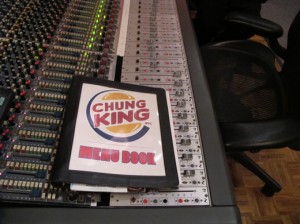
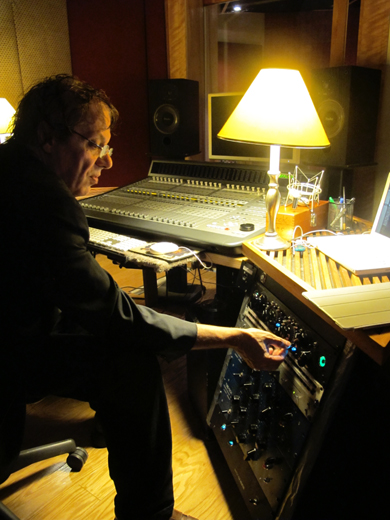
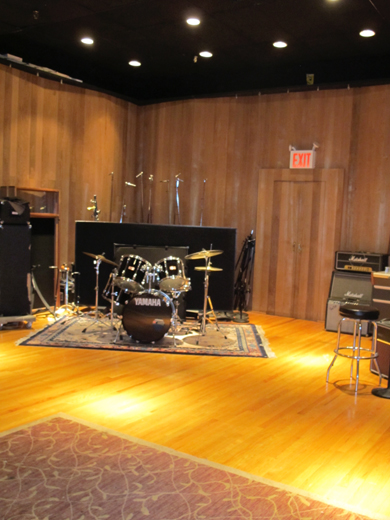
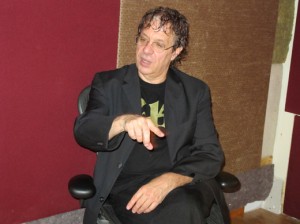
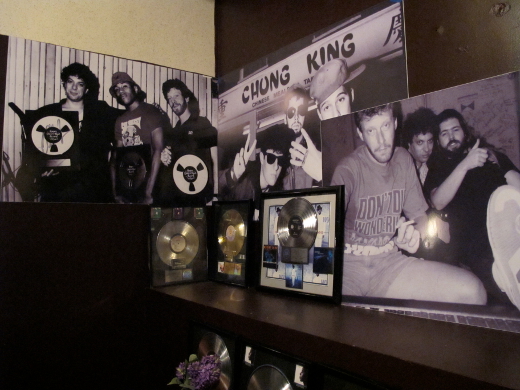

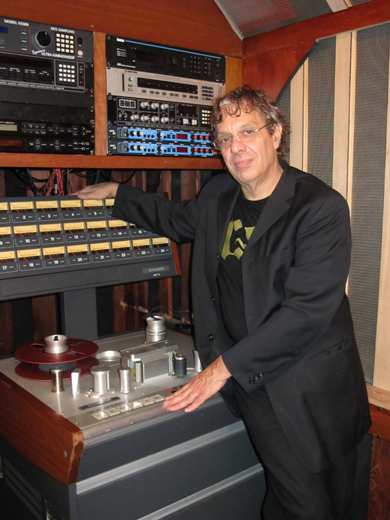


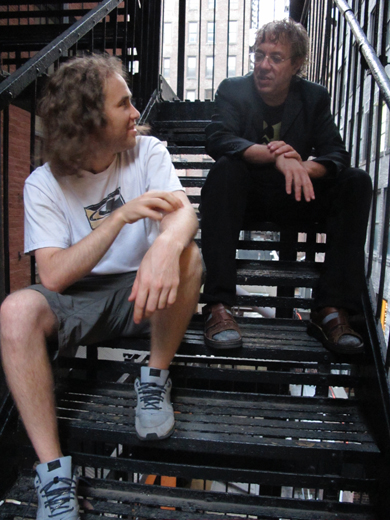
Joelhamilton
August 13, 2012 at 2:07 am (13 years ago)I did a bunch of stuff on that VR in the red room on varick…
John Songdahl
August 16, 2012 at 7:59 pm (13 years ago)Great Article David!
Thomas Maguire
August 16, 2012 at 10:17 pm (13 years ago)Welcome Back! Apparently there is a way to survive NYC Business Taxes!
betamax
August 17, 2012 at 3:06 pm (13 years ago)Good news about the legacy space there. Whatever happened to Skyline’s former 6th floor room? That was a great space too!
franman
August 27, 2012 at 7:12 pm (13 years ago)well. that 3rd floor certainly always had a great sounding control room.. I’m happy to see it open to the recording community again… Best of Luck John!